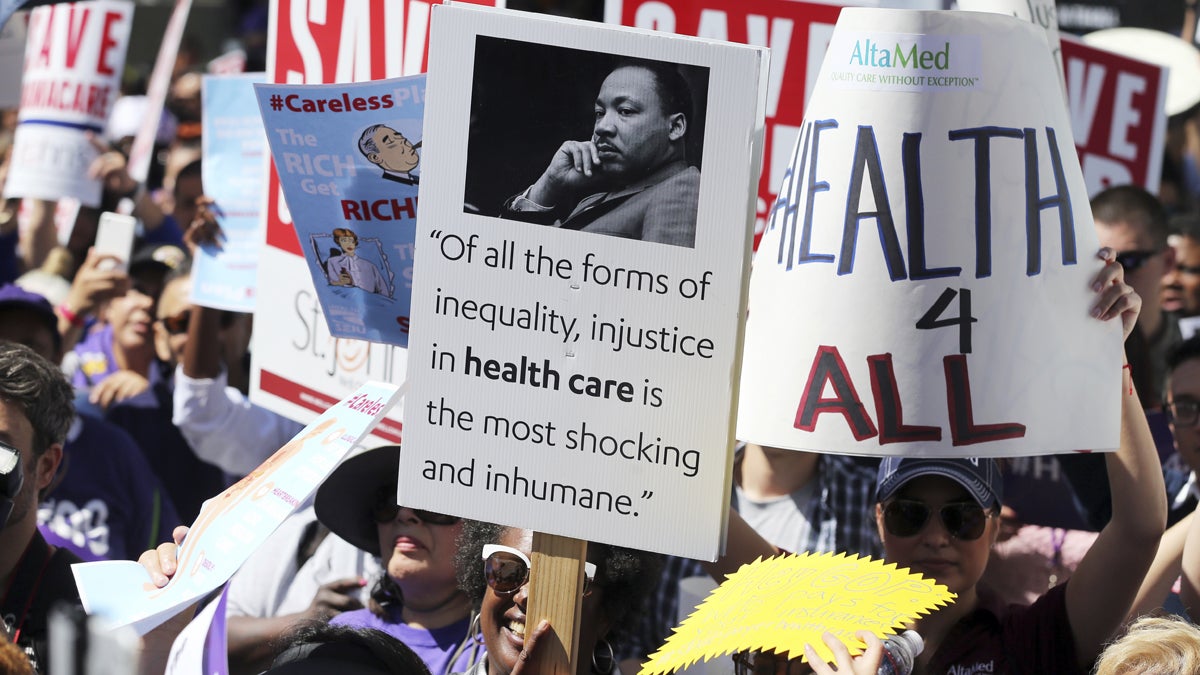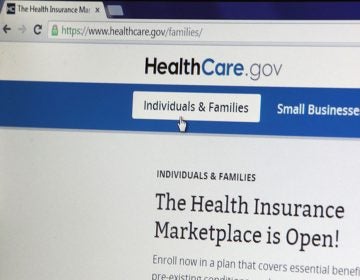The dangers of replacing Obamacare with the Republican health care bill

Protesters in Los Angeles in march demonstrate against the American Health Care Act, which the White House hopes will replace Obamacare. (AP Photo/Reed Saxon, file
How can we live in a modern society — what some would call the greatest country in the world — and not provide health care as a right to all of our citizens? The Affordable Care Act under President Obama sought to address this question and took the first steps in the right direction. Millions of people who had before been unable to obtain health insurance are now able to for both themselves and their families. What is at stake if the ACA is repealed? Allow me to take a crack at explaining.
I am a resident physician in New Jersey, in a community hospital system 20 minutes outside of Philadelphia. I have the privilege of caring for patients from all socioeconomic statuses; however, most of my patients are poor or middle-income, and many rely on Medicaid or Medicare. As a physician, I fear the passage of the AHCA and what that would mean for my patients. The Congressional Budget Office recently released their analysis of the revised AHCA that passed the house on May 4, and it was troubling to say the least.
Within 10 years, 23 million people would lose health insurance. Rep. Paul Ryan touted this as a victory, stating “[T]his CBO report again confirms that the American Health Care Act achieves our mission: lowering premiums and lowering the deficit.” It does indeed reduce the deficit, through major cuts to Medicaid spending and loss of subsidies to aid in making health insurance affordable. The claim that premiums will go down mainly applies to the young and healthy. A Kaiser Family Foundation analysis showed that for the average 60-year-old living in New Jersey who makes $30,000 a year, premiums would increase from $2,480 to just over $10,000: a third of their income. And what will happen to those who go uninsured? They don’t disappear; their chronic medical conditions don’t suddenly vanish.
The ACA’s whole concept in getting people access to health care through affordable health insurance with premiums unaffected by pre-existing conditions was that more patients would have access to primary care and specialists. They can afford to make appointments and therefore, we as physicians can practice preventative medicine. We can keep people’s chronic medical conditions from deteriorating by following up with regular visits, adjusting their medications to find their personal effective dose without side effects, sending for testing, and possibly even rehabilitation and nutrition counseling. This is all with the end goal of doing our best to keep them from being hospitalized.
I have a patient who I see in the office, Carmine, who has heart failure. Carmine was homeless for years, and his chronic medical conditions went untreated. Eventually, this caused his heart to fail. After being hospitalized for a bad exacerbation of his congestive heart failure, we were able to track down family who were willing to house him. Before he was discharged, we helped him start his application for Medicaid. Carmine now follows up regularly in the office with both his internist and his cardiologist. His chronic medical conditions are better controlled, and he is able to stay out of the hospital. If Carmine were to lose his Medicaid coverage, there is a good chance that he will not be able to afford to see me and his other doctors. He’ll end up right back in the ER, gasping for air and with legs swollen to the point where he can barely walk.
What do you think costs more: routine visits to your primary care physician for a checkup, or an ER visit for your out-of-control heart failure that was previously managed by your cardiologist and internist who you haven’t been able to see because of losing your insurance? An emergency room visit can cost anywhere from $1,233 to $2,168. According to healthcare.gov, the average cost of a three-day hospital stay is $30,000. Compare that to the $15-$50 co-pay for your regular checkup every couple of months.
In New Jersey alone, 509,800 people, my patients, stand to lose health coverage if the AHCA were to pass the Senate and go into effect. Under the ACA, our pesky pre-existing conditions were made tabula rasa, but under the AHCA, insurance companies will once again be able to use them to justify jacking up premiums for patients. In N.J. alone, this affects approximately 3.8 million people.
The AHCA is not a health care change for the better. It is merely a return to business as usual for health insurance companies and the wealthier members of our society who are fortunate enough to be able to afford what is being treated as their privilege: good health. It will result in more ER visits for people with treatable medical conditions who are now acutely ill and often will require hospitalizations. They won’t be able to afford these visits, so whom does the bill get passed on to? The rest of us and a healthcare system that’s already heavily burdened.
Please, for the sake of my patients and your fellow citizens, educate yourself from the many sources available out there. Call your congressmen and congresswomen, sign and circulate petitions, attend rallies. Make your voice heard. The AHCA is dangerous for our health.
—
Dr. Paul Girardi is an emergency medicine/internal medicine resident at Rowan University and a delegate for the residents’ union, the Committee of Interns and Residents.
WHYY is your source for fact-based, in-depth journalism and information. As a nonprofit organization, we rely on financial support from readers like you. Please give today.



